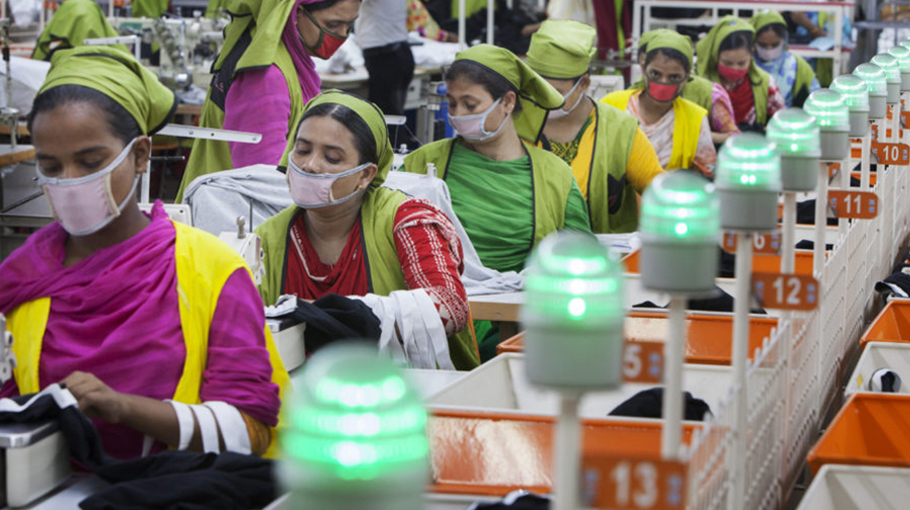Challenges of RMG sector in 2021

The country's ready-made garment (RMG) sector has overcome several devastating phases of Covid-19 in the year 2021.
The sector has resiliently recovered from the losses incurred amid the pandemic and the lives of the garment workers, the country’s assets, have also turned around towards the end of the year.
Work orders from the world’s renowned buyers, including those from the United States and European countries are returning to Bangladesh. The fear of cancellation or suspension of purchase orders for garment exports has also been allayed.
Hundreds of garments factories which were closed or were on the verge of closure due to the Covid-19 pandemic have been reopened. The existing factories are getting more and more orders.
Garment workers who were in fear of losing their jobs, are now being highly evaluated.
Although the RMG sector has revived, the beginning of the year was full of doubts for both the sector and the workers.
As garment factories were closed during the first three months of 2021, European and American buyers began moving to neighboring India, Myanmar, Sri Lanka, and Vietnam. They suspended and even started cancelling garment import orders.
In such a situation, the leaders of garment sector organizations including Bangladesh Garment Manufacturers and Exporters Association (BGMEA) and Bangladesh Knitwear Manufacturers and Exporters Association (BKMEA) had requested the government to keep the factories running. The government decided to keep the garments sector afloat amid the strict restrictions. The garment workers continued work risking their lives to keep the wheels of the country’s economy running.
As factories were closed for a few days before and after the two Eids in the outgoing year, the garment workers went to their homes in villages to share the joy and pleasure of Eid with their near and dear ones as usual.
However, they faced immense sufferings over the confusion of the reopening dates of factories. All public transports were suspended during that time due to the strict restrictions imposed to curb the spread of Covid-19. As a result, the workers had to return to work on freight trucks, vans, rickshaws, and even on foot and had to pay double or triple fares to reach their workplaces on time.
Due to the closure of the factory for some time during the pandemic, the number of orders from buyers in Bangladesh decreased and Vietnam became second overtaking Bangladesh in garment exports. However, after a gap of three months, Bangladesh regained the second place in the export of garments last September, leaving Vietnam behind.
Bangladesh received the Leadership in Environmental and Energy in Design (LEED) certification given by the United States Green Building Council (USGBC) in 2021.
The garment sector is now on the path of recovery after passing through many ups and downs throughout the year 2021.
However, many new challenges have also emerged throughout the year.
New orders are coming but the manufacturers are not being able to benefit much as freight charges and yarn prices have increased. Price calculation has become one of the major problems. Many factories are now also facing shortage of workers.
There is also a sign of fear that the new variant of Covid-19, Omicron, might affect the garment sector once again.



